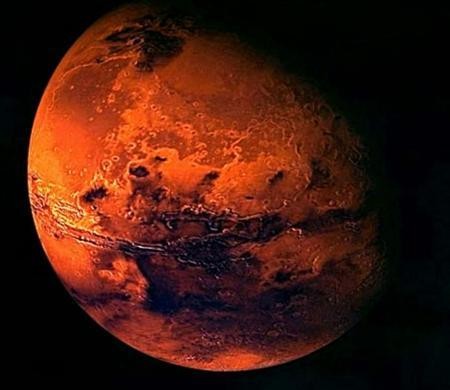Mars Express satellite of European Space Agency (ESA) has captured giant craters that look like blue pools on the surface of the Red Planet.
Mars Express orbiter took photos of the event in the Arabia Terra region. Astronomers said that these blue pools are, in fact, largest patches of dark, volcanic dust and sediment that were created over time because of violent sand storms.
The wind in the Red Planet can travel far more than 62 mph, moving the dust across the surface at high speeds. They are in the visible light spectrum and invisible to the naked eyes. The larger of the craters is more than 43 miles wide.
Finding out how aurorae on Mars might actually behave, ESA’s astronomers have used a simulator called Planeterrella. This device is a magnetized sphere that can create a magnetic field. When energized particles are thrown to the magnetized sphere, it can build a mini version of an aurora, showing how solar particles interact with Mars’ magnetic field. Astronomers filled the device with carbon dioxide to replicate the atmosphere of Mars, ITV News reported.
Cyril Simon Wedlund of Aalto University's Department of Radio Science, one of the researchers, said that this new study shows that the strongest color in the Martian planet is deep blue. Red and green can be seen to just like on the Earth.
Unlike the Earth, these aurorae revealed that they are best seen around the southern pole of the Red Planet. It seems like that NASA astronauts will be the first one to witness these spectacular lights when they decided to push through with Mars mission by 2030, according to Nature World News.



























